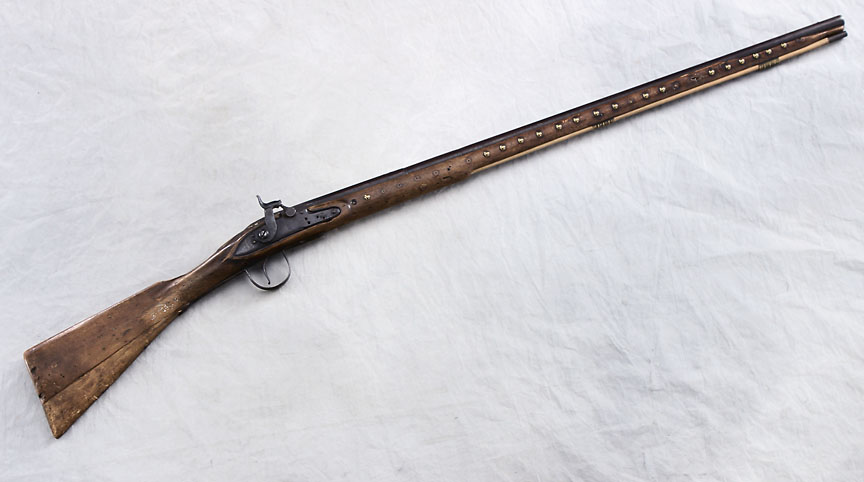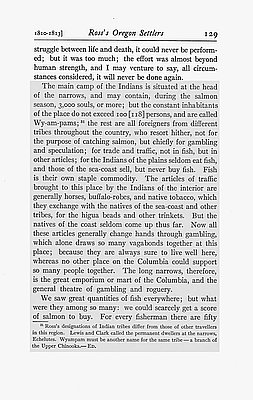- Catalog No. —
- OHS Museum 284
- Date —
- 1841
- Era —
- 1792-1845 (Early Exploration, Fur Trade, Missionaries, and Settlement)
- Themes —
- Environment and Natural Resources, Native Americans, Trade, Business, Industry, and the Economy
- Credits —
- Oregon Historical Society
- Regions —
- Oregon Country
- Author —
- Unknown
Barnett Trade Musket
This Barnett musket, made in England, is typical of the guns made available for trade by fur trading companies in northern North America during the early and mid-nineteenth century, most notably by the Northwest Fur Company and, after 1821, by the Hudson’s Bay Company. However, the American Fur Company, the Mackinaw Company, and the U.S. Indian Trade Office also traded Barnett muskets to Native Americans.
Trade guns like the Barnett musket were typically referred to as “Northwest guns,” “Mackinaw guns,” or “Hudson’s Bay fukes.” Less expensive than guns destined for Europeans or American buyers, these Indian trade guns were of light weight with relatively short barrels, were usually designed to fire a shot weighing an ounce or less, and had a trigger guard large enough to allow the gun to be used with gloves or mittens during the coldest months of the year. Typically, Barnett muskets were sold with a sideplate embossed with a dragon ornament that decorated the side of the gun opposite of the locking mechanism, offering Indians an easily recognizable mark of authenticity. The dragon is present, but not visible, in this photograph.
Even before the first land-based fur traders arrived in the Pacific Northwest, Native Americans along the coast had already been acquiring firearms from maritime traders for more than a generation. Because guns helped in the procurement of furs, it was advantageous for European and American fur traders to make them available for trade. Additionally, since firearms required a continual trading relationship in order to keep the gun-buyer supplied with gun powder, shot, flint, and replacement parts, fur traders found the trade-based dependency to their advantage. Native Americans, not blind to their dependency upon Euro-American traders for gun supplies, found value in their firearms as tools for territorial expansion, self-defense, and hunting.
Further Reading:
Russel, Carl P. Guns on the Early Frontiers: A History of Firearms from Colonial Times through the Years of the Western Fur Trade. Berkeley, Calif.: 1957.
Written by Joshua Binus, © Pregpn Historical Society, 2004.

